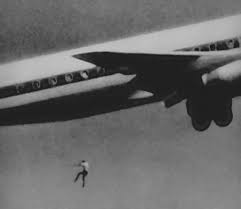The Curious History of Monastic Hairstyles: Understanding the Strange Haircuts of Christian Monks
Historical Context of Monastic Haircuts
Throughout history, Christian monks have been associated with their distinctive haircuts, especially the well-known tonsure. These haircuts weren’t just about personal grooming but served a deeper spiritual and symbolic purpose. The practice can be traced back to the early centuries of the Christian church, where hairstyles were used as visual symbols of religious devotion and separation from worldly life.
In the early Middle Ages, the Catholic Church mandated that monks shave their heads in specific patterns, a practice that was seen across various Christian sects, including Roman Catholicism and Celtic Christianity. The tonsure, in particular, was an essential part of this tradition. It signified humility, obedience, and a total commitment to God.
Interestingly, the hairstyle of monks often aligned with regional traditions, reflecting a cultural blend of religious and social norms. The variations in tonsures were more than just aesthetic choices; they also embodied theological disputes between factions of the church.
“The tonsure served as a badge of one’s ecclesiastical status and identity within the Christian community,” notes historian John Howard.
Symbolism Behind Monastic Haircuts
The most prominent symbolism behind monastic haircuts lies in the act of renunciation. Monks cut their hair to symbolize their renouncement of worldly pleasures, their submission to divine authority, and their commitment to a life of chastity and poverty. The tonsure, where a portion of the scalp is shaved, leaving a ring of hair around the head, symbolized the crown of thorns worn by Christ during his crucifixion.
Additionally, these strange haircuts served as a constant reminder to monks of their spiritual journey and dedication to God. Every day, as they caught glimpses of their shaved heads, they would be reminded of their vows of poverty, chastity, and obedience. In a society where appearance was closely tied to identity, the tonsure was a profound and visible mark of their religious devotion.
Types of Monastic Haircuts
Over time, different styles of tonsures developed, with two notable variations being the Celtic tonsure and the Roman tonsure:
- Celtic Tonsure: This style was distinct in that the front half of the monk’s head was shaved, with the hair at the back left long. This practice was common among the Celtic Christian monks in Ireland and Scotland and was tied to the traditions of early Irish Christianity.
- Roman Tonsure: In contrast, the Roman tonsure involved shaving the top of the head completely while leaving a ring of hair around the edges. This style was later adopted by monks in Rome and other parts of continental Europe.
The clash between these tonsures became a significant issue during the Synod of Whitby in 664 AD, where the Roman church’s influence prevailed, leading to the Roman tonsure becoming the dominant practice in Western monasticism.
The Process and Meaning of Tonsure
The tonsure itself was more than just a haircut. It was a ritual with deep spiritual meaning. The act of shaving one’s head during a ceremony signified the monk’s entry into a new life devoted to the service of God. The shaving was often done by a senior member of the monastic community, who would recite prayers as the monk’s head was shaved.
For the monks, this process represented the casting off of worldly ties and the acceptance of a simpler, more austere existence. The tonsure served as a visible reminder to the world of their religious commitment and the spiritual humility they embraced. The practice of shaving one’s head in such a manner can be linked to ancient ascetic practices, which often involved self-denial as a path to spiritual enlightenment.
According to Saint Benedict of Nursia, the founder of Western monasticism, “The tonsure is a crown of humility that all monks must bear.”
Religious Authority and Monastic Appearance
Religious authorities played a crucial role in regulating the appearance of monks. The church’s power over the monastic communities was vast, and it extended even to how monks should present themselves. The adoption of specific tonsures was not only a reflection of monastic discipline but also an indication of obedience to ecclesiastical authority.
During the early Middle Ages, monasticism was the heart of the Christian Church. The Benedictine Rule, a strict code of conduct for monks, dictated everything from their diet to their appearance. The tonsure, therefore, was not merely a hairstyle but a public declaration of their allegiance to the monastic life and the wider church.
This authority wasn’t just limited to haircuts but to the overall presentation of monks. The simple robes they wore, coupled with their distinctive haircuts, signified their position within the religious hierarchy and served as a physical reminder of their spiritual mission.
The Evolution of Monastic Hairstyles Through History
As Christianity spread across Europe and beyond, the traditions surrounding monastic haircuts evolved. Initially, the tonsure was a central feature of monastic life, but as time passed, the practice became less rigid. The Protestant Reformation in the 16th century, for example, led to a decline in monasticism in many parts of Europe, and with it, the tonsure faded into relative obscurity.
However, the Catholic Church maintained the practice of the tonsure well into the modern era. It wasn’t until the Second Vatican Council in the 1960s that the mandatory tonsure was abolished for clergy. This decision reflected the church’s desire to modernize its practices and make religious life more accessible to the faithful.
Influence of Monastic Hairstyles on Secular Culture

While the tonsure was primarily a religious practice, it did have some influence on secular hairstyles over the centuries. In medieval Europe, the concept of cutting one’s hair as a sign of submission or mourning was not uncommon, and it’s possible that the tonsure may have inspired some of these customs.
Furthermore, the distinct appearance of monks with their shaven heads has left a lasting impression on modern popular culture. Whether in films, books, or television, the image of the tonsured monk remains a powerful symbol of religious devotion and austerity.
Modern Interpretations and Symbolism of Monastic Haircuts
In today’s world, the tonsure is rarely practiced outside of traditionalist monastic orders. However, it continues to carry symbolic weight. For those who still choose to adopt the tonsure, it is a visible representation of their commitment to their faith. Some traditionalist Benedictine and Cistercian monks still maintain the practice, viewing it as an important link to the monastic past.
The symbolism of humility, renunciation, and obedience remains as potent today as it did in the early centuries of the Church. In a modern context, the tonsure can be seen as a rejection of materialism and a reaffirmation of spiritual priorities.
Table: Key Figures in Monastic Tonsure
| Figure | Biography |
|---|---|
| Saint Benedict of Nursia | Founder of Western monasticism and author of the Benedictine Rule. |
| Pope Gregory the Great | Promoted monasticism and religious reform in the early Middle Ages. |
| Saint Columba | A key figure in Celtic Christianity who supported the Celtic tonsure. |
| Saint Augustine of Canterbury | Brought the Roman tonsure to the British Isles during his mission. |
FAQs
- Why did Christian monks shave their heads? Monks shaved their heads to symbolize their religious vows, renounce worldly possessions, and demonstrate humility.
- What is the meaning of the tonsure haircut? The tonsure is a religious symbol representing the crown of thorns worn by Christ and the monk’s submission to God’s will.
- Are any monks today still practicing tonsure? While not common, some traditional monastic orders still maintain the practice of the tonsure as a symbol of religious devotion.
Meta Description:
Discover the history and symbolism behind Christian monks’ strange haircuts, exploring their religious significance and cultural influence.
References:
- https://www.historydefined.net/why-did-christian-monks-have-such-strange-haircuts/
https://www.historydefined.net/why-did-christian-monks-have-such-strange-haircuts/ - https://en.wikipedia.org/wiki/Monastic_tonsure
https://en.wikipedia.org/wiki/Monastic_tonsure - https://www.britannica.com/topic/tonsure
https://www.britannica.com/topic/tonsure






